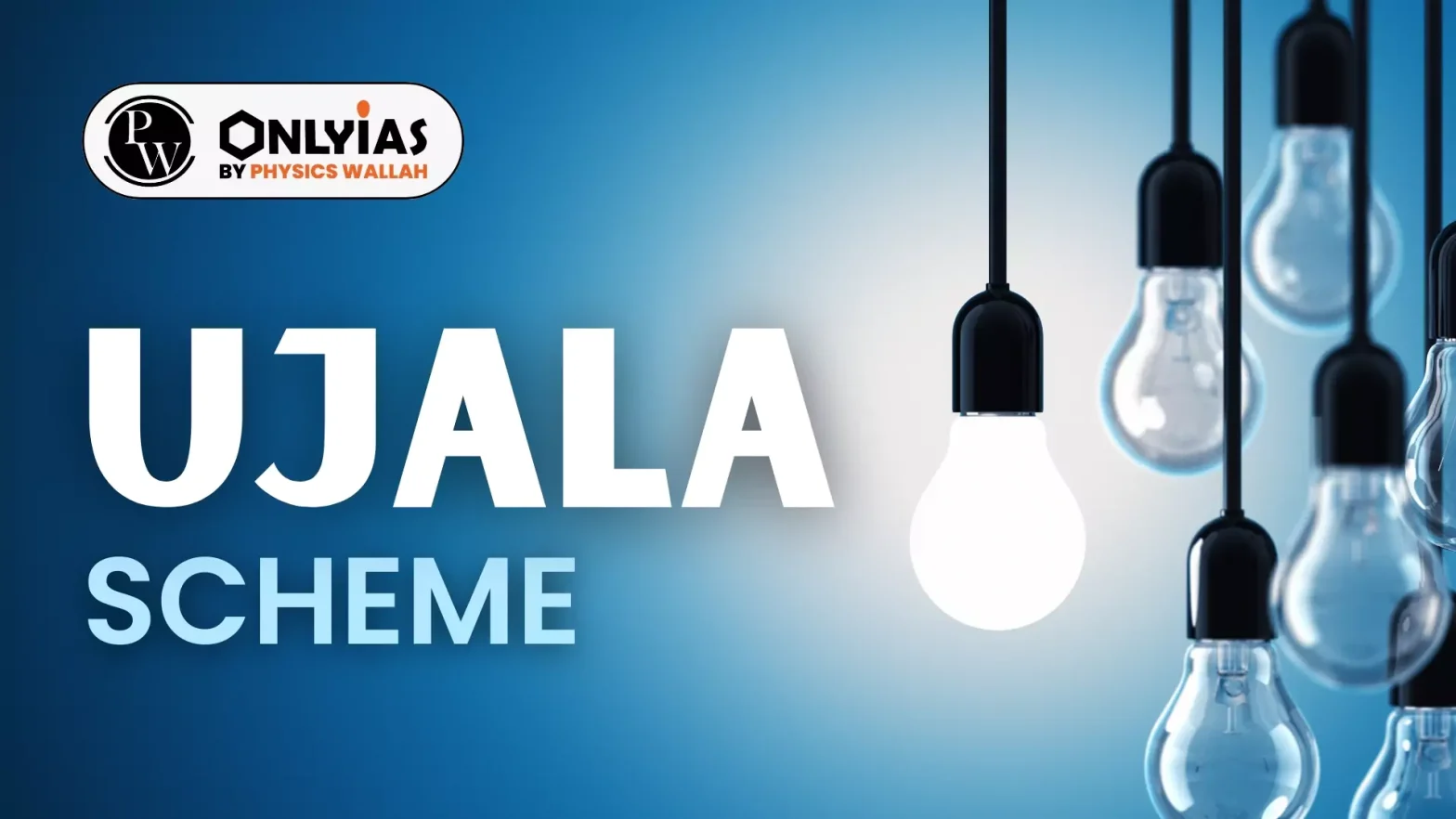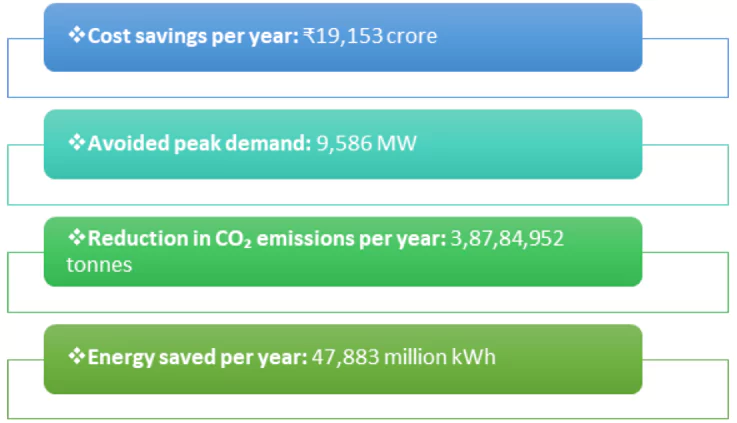UJALA Scheme was launched by the Ministry of India in 2015 to promote affordable LED lighting. The UJALA Scheme has transformed the lighting sector by reducing carbon emissions nationwide.

UJALA Scheme (Unnat Jyoti by Affordable LEDs for All) is a pioneering and innovative initiative by the Indian government to revolutionize energy efficiency in households. Launched on 5 January 2015 by Prime Minister Narendra Modi, the UJALA Scheme has become a symbol of sustainable development and energy conservation. As it commemorates its 10th anniversary, this program has achieved global recognition as the world’s largest zero-subsidy domestic lighting scheme.
The primary objective of the UJALA Scheme was to make energy-efficient lighting affordable and accessible to every household in India. The scheme has played a critical role in reducing electricity consumption, carbon emissions, and electricity bills by distributing affordable LED bulbs, tube lights, and fans.
| UJALA Scheme Overview | |
| Aspect | Details |
| Full Form | Unnat Jyoti by Affordable LEDs for All |
| Launch Date | 5th January 2015 |
| Launched By | Prime Minister Narendra Modi |
| Ministry | Ministry of Power |
| Implementing Agency | Energy Efficiency Services Limited (EESL) |
| Main Objective | Promote energy-efficient lighting, reduce electricity consumption, and lower carbon emissions. |
| Target Audience | Households, urban local bodies and rural households (via GRAM UJALA). |
| Key Products Distributed | LED bulbs, LED tube lights and energy-efficient fans. |
| Payment Models | Upfront payment or on-bill financing via electricity bills. |
| Achievements (As of 2025) | Over 36.87 crore LED bulbs were distributed with annual energy savings of 47.9 billion kWh. |
| Carbon Emission Reduction | Avoided over 38.7 million tonnes of CO₂ emissions annually. |
| Cost Savings | ₹19,153 crore in annual electricity bill savings for consumers. |
| Impact on Peak Demand | Reduced electricity peak demand by 9,586 MW. |
| Related Initiative | Street Lighting National Programme (SLNP). |
| Special Scheme for Rural Areas | GRAM UJALA Scheme, offering LED bulbs at ₹10 each. |
The UJALA Scheme, originally launched as the Domestic Efficient Lighting Programme (DELP), was later rebranded to reflect its broader objectives. It aimed to replace traditional lighting sources like incandescent and CFL bulbs with energy-efficient LED lights. This program not only reduced energy consumption but also significantly cut costs for consumers.
Key Details:
The main objective of the UJALA Scheme is to promote the use of energy-efficient lighting and reduce the country’s carbon footprint. Other key objectives include:
Before the launch of the UJALA Scheme, traditional incandescent bulbs dominated the market. These bulbs were energy-intensive and expensive in the long run. Despite their efficiency, LED bulbs were costly, with prices ranging from ₹400–500 per bulb in 2014, making them unaffordable for most Indian households.
Traditional lighting systems accounted for a significant portion of household energy consumption, leading to higher electricity bills and increased carbon emissions. To address this, the UJALA Scheme aimed to:
The UJALA Scheme’s 10-year journey has been transformative. Here are some highlights:

The UJALA Scheme operates on a demand aggregation and price crash model, ensuring affordability. Key features include:
The UJALA Scheme has been pivotal in promoting energy efficiency and reducing energy costs for households. Its success stems from well-structured initiatives designed to make energy-efficient appliances affordable and accessible. Below are the key initiatives that form the foundation of the UJALA Scheme:
For aspirants preparing for competitive exams like UPSC, the UJALA Scheme holds significant importance. It serves as a prime example of government-led initiatives in the areas of:
Understanding its objectives, implementation strategies, and outcomes can help students connect theoretical concepts with real-world applications.
The UJALA Scheme, launched under the Ministry of Power, has proven to be a cornerstone of India’s efforts to achieve energy efficiency and sustainability. By providing affordable, energy-efficient lighting to millions of households, it has not only reduced electricity bills but also contributed to significant environmental benefits. As it completes 10 years of success, the scheme remains a shining example of how innovative policies can lead to transformative change, paving the way for a brighter, greener future.
Ready to boost your UPSC 2025 preparation? Join PW’s UPSC online courses today!
The UJALA Scheme is an initiative to promote energy-efficient lighting by providing affordable LED bulbs, tube lights, and fans to Indian households.
The UJALA Scheme is related to the Ministry of Power and implemented by Energy Efficiency Services Limited (EESL).
The UJALA Scheme was launched on 5th January 2015 to transform India's domestic lighting sector.
The main objective of the UJALA Scheme is to enhance energy efficiency, reduce electricity consumption, and lower carbon emissions.
The UJALA Scheme is important for UPSC as it highlights government-led sustainable development, energy efficiency, and public-private partnerships.
In 10 years, the UJALA Scheme has distributed over 36 crore LED bulbs, saving energy, reducing costs, and significantly cutting CO₂ emissions.

<div class="new-fform">
</div>